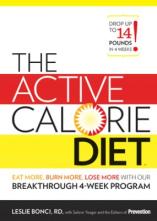5 Mistakes that make pain worse

An estimated 43 million Americans report living with chronic pain, defined as lasting for at least 3 months. Yet experts agree that it's woefully undertreated in our country. Despite breakthroughs in the understanding of pain, few doctors are aware of these advances or are trained in pain management, says Michel Dubois, MD, director of pain medicine at New York University Langone Medical Center.
Eliminating your pain entirely may not be realistic; what is attainable is to lower it enough to improve your life and do the things you love. If you're making any of the mistakes that follow, we have the right formula for lasting relief
1) Toughing It Out
One in four pain sufferers wait at least 6 months before seeing a doctor.
Typical reasons: They downplay the pain or think it'll pass on its own, according to the American Pain Society. Also, many sufferers self-treat with OTC painkillers.
Get relief: Seek treatment sooner rather than later. Studies show that the majority of injuries resolve themselves in about 4 weeks, so if yours hasn't-or if your pain is affecting your ability to function-see your doctor.
70 quick and natural cures for everyday health issues
2) Doctor Hopping
In our fragmented health care system, with a specialist for every ailment, it's easy to jump from one doctor to the next. But doctor hopping, experts say, can waste time and money, lead to excessive MRIs and other diagnostic tests, and delay treatment.
Get relief: Find one doctor who can be your point person to coordinate other treatments. Your primary care physician is likely the best person for this. "Just make sure you get a sense that he or she takes your pain seriously, offers you a treatment strategy, and sees you frequently enough to monitor your progress-or refer you to a specialist if your plan is not working," says Russell Portenoy, MD, chairman of the department of pain medicine and palliative care at Beth Israel Medical Center in New York City.
8 insider tips for acing a physical
3) Avoiding Exercise
It may be the last thing you feel like doing when you're hurting, but study after study shows that exercise reduces all kinds of pain. It strengthens your muscles and oils your joints, making you less likely to get reinjured. It also releases natural pain-relieving endorphins, which can boost your mood, and it fights the inflammation associated with a number of painful conditions like gout and rheumatoid arthritis.
Get relief: Start slow and easy, especially if you've been sedentary for a few months. Do 5 or 10 minutes of walking or another low-impact activity a couple of times a day if that's all you can do.
10 ways to burn more calories on your walk
4) Avoiding RX Pain Pills
The news is filled with stories about unintentional deaths from pain meds or celebrities who became hooked on them. So it's no wonder that many pain sufferers prefer to play it safe with OTC pain relievers. Even some physicians avoid narcotics for fear of being punished for overprescribing them. But the reality is, most people in pain aren't going to get addicted to or die from pain meds. And the benefits of taking them are immense-when you're in less pain, you can be more active and speed your recovery.
Get relief: Most doctors start patients on low doses of opioids and require check-in evaluations every 3 to 4 weeks to make sure the medication is working well. If you experience that "drugged" feeling in the beginning, don't worry-it'll go away in a few days as your body adjusts to the medication. Take the drug only as prescribed-don't increase the dose or combine it with other types of drugs, such as muscle relaxants or anti-anxiety drugs, unless you've talked with your doctor.
All that said, there are some people who may be predisposed to addiction. If you've had a problem with alcohol or drugs in the past, you'll have to be monitored even more closely by your doctor. Signs of addiction include feeling compulsive about taking the drug, being unable to control how much you take, and showing no signs of improvement.
Create the healthiest medicine cabinet
5) Avoiding Natural Remedies
If you can't take pain meds because of side effects or are just looking to enhance their effects, consider alternative treatments. Clinical studies show that acupuncture, for example, relieves osteoarthritis pain, sciatica, and lower back problems. Rheumatoid arthritis sufferers can benefit from the anti-inflammatory effects of omega-3 fatty acid supplements; according to a large review of recent research, patients who took devil's claw, white willow bark, and cayenne for lower back pain had more relief than those who took a placebo.
Get relief: Herbal therapies are not without side effects and they may interfere with other medications, so talk with your doctor before taking them. For a science-based primer on top natural pain fighters, go to prevention.com/naturalpaincures. Numerous studies also show that mental techniques can help ease pain. Start with some simple relaxation techniques: Practice deep breathing and tightening and relaxing different muscles for 15 to 20 minutes every day. A therapist can help you learn other types of relaxation, such as visualization, self-hypnosis, and biofeedback-ask your doctor for a referral.
10 best remedies for pain
Do you have a favorite natural remedy?
More from Prevention
Life-Changing Reasons Why You Should Exercise
Genius Cures In Your Kitchen Cabinet
Good Health Habits Made Better
Top 10 Healing Herbs

Order Prevention today and receive a FREE Trial Issue and FREE Pedometer!

Say "yes" to amazing fat-burning foods. Order your copy of the Active Calorie Diet book
